#Found out marcus is trans and was struggling with it a lot when they first met (which is why he was Like That a lot) and has a million
Explore tagged Tumblr posts
Text
my rook is so funny. extremely boring normal ex criminal who joined the wardens in his 30s to avoid going to prison. feels no alliance to his faction at all but is a little freak who enjoys taking orders so he does well. meets varric who instantly projects act 1 marcus onto him for no real reason other than they're both kind of assertive guys he has to work with and wants to fuck. has no idea who marcus is and assumes "hawke" is a recent ex varric isn't over. enters a weird situationship with him because hooking up with a weird older dwarf is more fun than being a warden. suddenly finds himself in charge at the lighthouse and starts acting like an old grizzled commander even though he and neve are like the same age. kind of wants to die so he doesn't care about anything that's happening but he'll see it through until the end because that's his Job.
#veilguard spoilers#minor. but i dont want to get yelled at.#the choices theyve made for a lot of rook's characterisation is wild so he HAS to be a freak#he and harding must be close in age. why did her personal quest feel like he was a middle aged dad chaperoning a#teenager from life is strange#to be clear he and varric didnt fuck. varric got scared.#he gave him a MIRROR? . extremely funny with the trans option bc in my head it went down like. varric has recently#Found out marcus is trans and was struggling with it a lot when they first met (which is why he was Like That a lot) and has a million#terrible flashbacks to all the jokes he made when they were bantering that were actually probably really hurtful#(marcus doesnt remember or care)#so when he finds out rook is trans and struggling with it which is why he's Like That he panics and gives him a gay ass mirror#and is like 'to remind you of who you are :) a man in the maker's eyes' and rook is like (looking at varric's tits) “😐👍🏻 okay.”
19 notes
·
View notes
Text
Marcus/Camille Platonic Headcanons
@wagnerthedragon
Camille is a year older than Marcus
They met for the first time at their siblings's wedding and became quick friends even if their families found it distasteful for a boy and a 'girl' to befriend each other
The Woolahams's (read: Gaylord's) disapproval of their friendship reached such an extreme that Marcus sneaked out continuously and lied about 'being with friends' to meet with Camille
As kids, Marcus and Camille liked to play in very difficult-to-see spots of Hyde Park. They liked to climb trees, play at being soldiers, play with the rolling hoop (one of them would roll the hoop and the other would try to pass through it --they hurt themselves several times), etc.
Camille was gifted dolls, with which Sydney tried to tell them stories (always wlw because it's Sydney we're talking about and there was no seemingly boy boy). Marcus and Camille payed attention to him exactly zero times and instead used the dolls as current-day action figures. Many of then got their gender transed along the way because Camille once argued that it was cooler that way
Marcus was the first person Camille came out to and the one who was there with him when he realised he was actually a man in the first place
Marcus has been incredibly supportive of him (duh) and when he realised the dysphoria Camille was going through --accentuated by the gender stereotypes, clothing and the likes of the era-- he did everything he could and more to let Camille know he was a man
Since Camille came out to him, Marcus has managed not to use female language around people who can't know of Camille's gender identity. My guy has mastered Victorian-friendly gender neutral language expressly because misgendering Camille (however necessary it may be when he's with, say, Gaylord) makes him sick
Once when they were around 16 and Camille was feeling very dysphoric about having to wear dresses --as they were forced onto him because he 'was a girl'-- Marcus got so angry that he began undressing and putting on a dress while giving a speech about how clothes did not make him any less of a man, because just like he isn't a woman for wearing a man, neither is Camille (Camille may have teared up a bit and laughed because Marcus looked ridiculous)
Their marriage obviously was so that Marcus and Camille spending so much time together was accepted and Camille could be brought somewhere where he could dress/behave as he liked
Regardless of how straight they both are, they constantly refer to each other as husband. Those two have taken the institution of marriage and turned it into the greatest expression of friendship
Camille likes to escort Marcus to his bedroom every night, they usually have a small conversation when they get there and Camille always leans on the threshold in exactly the same way
Weirdly enough, they both stayed single in the romantic/sexual sense all their lives in spite of the other not having considered them dating someone else bad
Marcus likes to send Camille every bit of information he can on trans men (James Barry? Yes, Marcus loves him and was very excited to tell Camille about him)
There was a small village near their house, and Camille is really well known there. He helps the local doctor, patronises the small bookshop, is invested in the village's wellbeing so much that they once tried to make him mayor
Camille likes reading books about philosophy and Marcus likes to hear him read while he rests his head on his husband's lap
They say they love each other at least once a week
Marcus struggles with guilt a lot (and the fact that he can't cry makes it all the worse because he feels horrible) and Camille always has positive words for him even if he is a hardcore pessimist
In the military, Marcus has managed to be surrounded by queer soldiers and he loves it
In a modern setting, they'd be in a qpr and still married also Marcus would be more outspoken about trans (and gay) rights than Camille because he's strong enough not to have anything to lose
3 notes
·
View notes
Text
9: Why Gatekeeping is Ok (#FufuChallenge Discourse)
African restaurants in the U.S., while not as popular as their foreign counterparts, are not far and few between in states such as a D.C., New York, and Georgia having large African communities. In recent weeks, videos of people trying variations of fufu and stew have popped up seemingly out of nowhere, unknowingly creating a “trend” called the #FufuChallenge. While some of the reactions were positive, many of these videos were quite the opposite, in which individuals with little to no home training had the absolute gall to record themselves treating the food as if it were 50 Shades of Grey – including but not limited to spitting, slapping, tossing, and other things that are considered incredibly disrespectful.
Now, fufu is native to West Africa and made from boiled and pounded cassava. Different countries have their versions of the same food, give or take a few ingredients - banku, eba, ga’at, ugali, mofongo, and cornmeal coucou (fungi, for my VI people). As disclaimer – I am an adventurous eater, and the first time I tried fufu, I was a fan. I don’t think it’s a food that’s hard to enjoy flavour-wise, but I can see how the texture may not be agreeable for everyone. Additionally, being from a culture that eats with their hands, there’s a lot of etiquette that’s instilled in at a young age– the most important being that food is not a toy. However, the recent videos have sparked a debate about Black acceptance between different members of the diaspora.
It is interesting how, during a time of inclusivity and unification within the Black community, it is taking no more than pounded root vegetable for most of you to show your ass. I don’t feel like now is the time to remind Black Americans that some of “common” foods would be considered abhorrent to others – chitlins and pickled pig feet, we’re looking at you. Everyone is losing their mind over pounded cassava, but the idea of eating soggy cornmeal – also known as grits – is a normal phenomenon. We can also bring snack foods into this - hot pickles in a bag, Vienna sausages - but the point of this conversation is not to sit here and bash culinary history, but to make the argument clear that every culture has foods that others would find less than palatable.
In the same breath that we want to come together, fight systemic oppression, and be on some fake Marcus Garvey shit, people are referring to African food as disgusting, garbage, and even “dog food”. But you want to go back to Africa, right? Find your roots?
Have you all lost your damn minds?
Black people exist everywhere, and that inherently means that the techniques and methods of cooking we use are prevalent in a lot of other cultures. If you don’t believe me, take the time to Google Korean fried chicken and the fact that the idea of frying chicken in batter was introduced by Black soldiers stationed abroad in the 1940s and 1950s, or how gumbo and jambalaya are variants of traditional African foods, created using recipes that date back to slavery. So, there’s a chance that there are other foods across various cultures – including Black American meals - that resemble traditional African cuisine. Why don’t you drag those on social media as well?
More likely than not, before the Trans-Atlantic slave trade, this is probably the food that peoples’ ancestors were eating, and by reasonable conclusion, it’d be the food that OUR ancestors were eating. Additionally, there are so many other cultures with foods that can be turned into trend, so why was the Internet’s thought process to bully African people for no reason other than for laughs on social media? No, just traditional African food? Ok, noted.
Like ENNY said, please free my people from clout. PLEASE. I’m begging at this point.
And non-Black people have not escaped scrutiny either – so if you found yourself at a protest this year or have a cheeky little “BLM” in your bio, but you still found the time to degrade African culture on your timeline, I’m going to need you to go ahead and click backspace on your bio for me really quick, because the math is not math-ing. When it comes to other ethnic groups asking for parts of their culture to be respected and kept sacred, everyone wants to be quiet and listen, but when Black – specifically African people - ask for the same respect, people struggle to do so and are left with two options, or what they think are their only options – to, A, dismantle parts of Black culture to be co-opted and renamed to be acceptable to the white gaze or, B, label these things as disgusting and left at the mercy of Twitter think piece writers and Clubhouse podcasters who have nothing better to do than talk about things that they absolutely have no knowledge on.
Lastly, a LOT of foods from other cultures that are popular in the United States are not even authentic to that culture. To stand in front of a Taco Bell, or Panda Express, or Olive Garden and tell anyone that is your idea of eating “ethnic” food is not only a lie, but the curse of nationalism and Western closed-mindedness.
If you think our friends in Mexico are sitting down at their tables each night with a Crunch Wrap Supreme and Nacho Fries, you are highly mistaken, beloved.
But, with no empathy, authentic African culture has been co-opted as a sort of internet trend in which it’s acceptable to bash damn near an entire continent for food that takes immense labour and cultural knowledge to create successfully. And then, the people who posted their negative reviews actually had to sit, order the food, set it up, film themselves eating it, decide they didn’t like it, go back and edit the video – with their disrespect front and centre – and thought they could post it on the internet free of scrutiny. Like, we (as Americans) aren’t even eating traditional foods from other cultures to BEGIN with, so why was now the time to start, and why did you all start with African food?
Answer, and quickly.
There has always been tension within the Black community between Black Americans and the African diaspora, over feelings of perceived superiority and inferiority on both sides, and in all honesty, this is an argument I don’t subscribe to - at the end of the day, systemic racism does not care what flag you have in your bio, or how long you’ve lived in America – you’re Black, plain and simple.
But West Africans were not the first people who hopped on the internet and begged people to try their food, so the unwarranted opinions are more proof that maybe sometimes, it’s ok to gatekeep. And no one is begging for these reactions either or saying that you have to like it – if you’re not a fan, just nize it and maybe just…delete the video? Outside of the topic of respect also, the Internet is forever. So those of who you unabashedly are posting disrespect on the internet, think where this video will be circulating in a year or so.
Lastly, if you think Africans are blowing the response to the “fufu challenge” out of proportion, keep that same energy next time you see white women in box braids, rocking evil eye pendants, doing intricate henna on your timeline, or trying to lecture you about aligning your chakras, since it has now been established that disrespecting peoples’ culture is no more than acceptable social media discourse.
Be blessed!
1 note
·
View note
Text
Marsha P. Johnson - Sources

If you listened to our podcast on drag queen and activist Marsha P. Johnson, and you want to learn more, here’s a list of all the sources we used. If there’s anything in particular which I mentioned which you’d like to know the source for, feel free to ask!
Be aware that in looking into these sources you will come across some which misgender or deadname trans people. While I recommend some of these sources for the information they contain, I don’t condone this decision.
I will also note that I didn’t look into Marsha’s involvement in Stonewall during research for this episode, so I can’t comment on how these sources deal with that. That’s something we’ll be talking about later in the year!
The two most extensive sources on Marsha are both documentaries:
Pay It No Mind - Michael Kasino’s 2012 documentary
This documentary uses 1992 interview footage taken with Marsha just weeks before her death, as well as a lot of footage of people who knew her talking about her. This is where we get a lot of first-hand information from Marsha and most of the quotes of hers which I mentioned in the episode.
The Death and Life of Marsha P. Johnson - David France’s 2017 documentary
This documentary follows the investigation of Marsha's death by Puerto Rican trans woman Victoria Cruz. It largely focusses on where Marsha's death sits within the wider context of transphobic violence across the USA. This was the source of a lot of my information about the possible causes of Marsha’s death. It’s available on Netflix.
As I mentioned in the podcast, there has been significant controversy surrounding this documentary, and there’s plenty of information about that online. The main articles which I used when reading up on this can be found here, here, and here. I also recommend this one in particular if you’d like a very in-depth look at the claims and evidence involved.
We are lucky enough to have a fair bit of other video and audio featuring Marsha or people who knew her:
Randy Wicker’s Youtube channel has a whole lot of videos about US queer history, including some of or about Marsha. The particular video which I found useful in getting an understanding of Marsha was this video of people gathered at the memorial created beside the Hudson River in the days after her death.
Making Gay History, a queer oral history podcast run by Eric Marcus, includes an interview with Marsha and Randy Wicker, conducted in the late 1980s. This page also includes a transcript and a lot of links to further resources about Marsha and Randy. This was the source of my direct quotes from Randy.
A Gender Variance Who’s Who provides a short biography of Marsha, as well as a list of further readings, and links to a video of a panel discussion with several people who knew Marsha.
Some books which include general information on Marsha are:
Stonewall: The Riots That Sparked the Gay Revolution by David Carter (2010)
David Carter conducted many of his own interviews for this book. It was the source of a lot of my background on life for queer youth on the streets of New York, as well as containing some information about Marsha.
Stonewall by Martin Duberman (1993)
This book was the source of a lot of my information about Marsha’s relationship with Sylvia Rivera; about Marsha and Sylvia’s experiences in gay activism; and about STAR. It includes information and quotes from interviews with Marsha not found elsewhere.
Andy Warhol: From A to B and Back Again (2018)
This book includes an essay by Glenn Ligon on Warhol’s portrait of Marsha, and the issues of race and class which are tied up with that.
For more information specifically on STAR, I’d encourage you to check out:
Street Transvestite Action Revolutionaries: Survival, Revolt, and Queer Antagonist Struggle
This is an excellent place to start reading about STAR - it’s a collection put together in 2012 of a whole host of writings and interviews from the 1970s. It includes an interview with Marsha, which was the source of her definitions of drag queen, transvestite, and transsexual, which I quote in our podcast. There’s also a lot of material written by Sylvia Rivera, including about her relationship with Marsha and their work with STAR.
The Gay Liberation Youth Movement in New York: 'An Army of Lovers Cannot Fail' by Stephen Cohen (2007)
This book talks about STAR in the context of other queer movements in New York at the time, including the GAA and GLF On p.36 you’ll find the list of STAR’s political goals which I referenced.
Street Transvestite Action Revolutionaries by Leslie Feinberg (2006)
This article is about the foundation of STAR, and includes quotes from an interview Feinberg conducted in 1998 with Sylvia Rivera.
A few other online sources which I used or mentioned were:
The 2018 New York Times obituary of Marsha which was created as part of their Overlooked series. It does provide some information about Marsha’s early life not found elsewhere.
This 2012 article is about the reopening of the investigation into Marsha’s death.
I also mentioned some statistics on the current realities of violence and homelessness for trans people in the USA today, especially trans women of colour. These stats were sourced here and here.
42 notes
·
View notes
Text
An Interview with Rack Lo
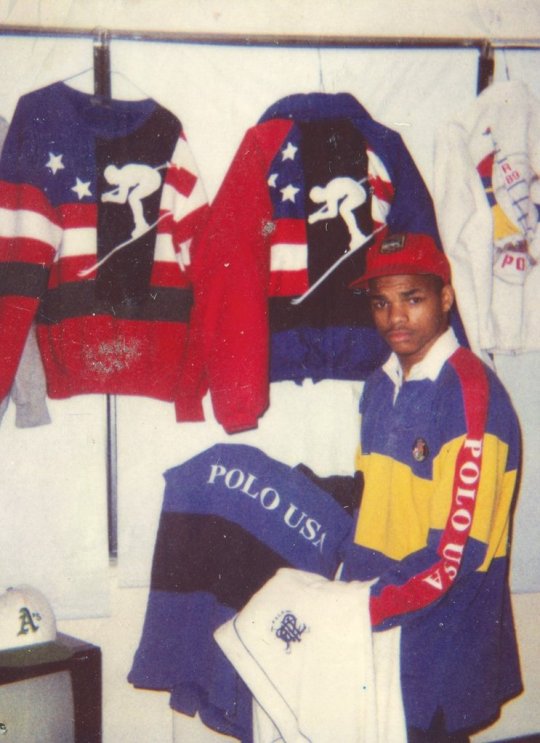
Ralph Lauren has always been a master of appropriation — from hunting jackets to polo shirts, the great man’s finest designs are heavily indebted to the world of functional clobber. But what happens when the appropriator is… er… appropriated?
In the late 80s, at a time when Ralph’s American dream was aimed squarely at the minted elite, a crew of working-class kids from New York known as the Lo Lifes took to nabbing his most audacious creations from the racks as a way to stand out on the streets of Brooklyn.
And whilst most would look daft in head-to-toe Polo ski attire, this lot managed to pull it off, helping to take hip-hop style beyond fat laces and leather tracksuits.
Rack Lo was one of the original Lo Lifes, and is still heavily involved today, running his own brand dedicated to Polo-inspired paraphernalia, and helping to organise the various Lo Life gatherings that take place throughout the year.
I sent him a barrage of questions via trans-Atlantic e-mail, and thankfully, he replied…
Do you remember being into clothes as a kid?
Oh man, I remember well. As a kid, my brother was more into materialism and brand names, and I was satisfied with whatever my mother and father were able to provide for me, but as I got older things changed and I became very materialistic.
Growing up I remember wearing Lee jeans, Pro Keds and Converse. Back then it was more about your style as oppose to what brand you was wearing — people cherished the look more than the name.
Growing up in Brooklyn in the 80s, how important was it to wear the right stuff?
It was very important because what you wore told a story in itself — what you wore pretty much separated you from the others. For instance, if you didn’t have street respect or a reputation, there were some things you just couldn’t wear, and it would be very dangerous to do so.
So in Brooklyn before you wanted to get fly and fresh, you had to know how to fight and defend yourself. If you didn’t have a reputation for defending yourself, you became what we called ‘The Herb’, and people would take advantage of you anytime you were seen.
In Brooklyn getting fresh was a part of the street life for many of the street legends.
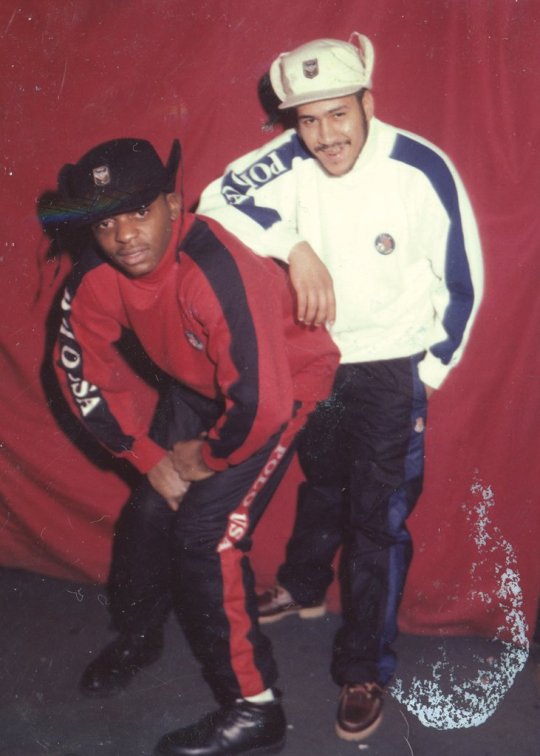
When did the Lo Life Crew start? When did it go from being a few people wearing Polo stuff, to a full crew?
It started in 1988. The crew got bigger and gained more members once I decided to unite both parties, Marcus Garvey Village and St Johns. Then some time later, the late, great Boostin Billy started a chapter in Philadelphia, and it started to pick up from there.
Why Polo? What was the appeal of this stuff?
Polo just stood out the most. For some reason we were just attracted to it. First, it had amazing color ways and wasn’t prevalent in the United States ghettos. Polo wasn’t designed for poor urban kids; it was made for the upper class, waspy and collegiate kids. So when we started wearing we took it to a whole different level.
The Lo Lifes made Polo popular in the ghetto. We took what Ralph Lauren designed and created new looks and styles based around our concept of ‘Lo Down’. Lo Down is a term used when a person is wearing Polo Ralph Lauren from head to toe.
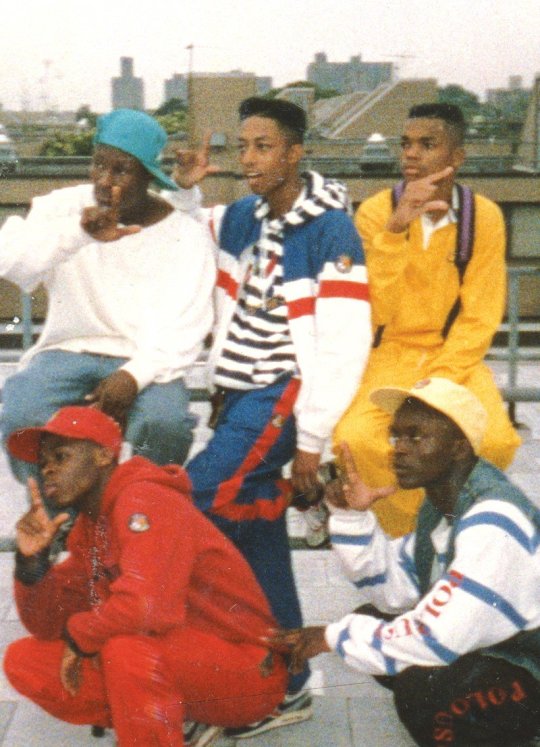
I was going to ask you about that. Could someone ever go too far and wear too much Polo stuff?
Many of the times we dressed in what we called ‘layers’ — layers of nothing but the finest Ralph Lauren Polo on the market. From head to toe all of our clothing was Polo Ralph Lauren. This particular dress code shocked a lot of people, and even Ralph Lauren was amazed.
For us it was never about just having Polo, but more about how you wore and coordinated the Polo — that is what made you special.
Do you remember the first Polo item you got?
The first Polo item I remember shoplifting was the Anniversary Cross Flags Sweater in 1987. An OG named Mike-Lo (cousin of Friz-Lo) had taken us to Riverside Square Mall out in Bergen County, New Jersey. We had taken the sweaters from a major department named Saks Fifth Avenue.
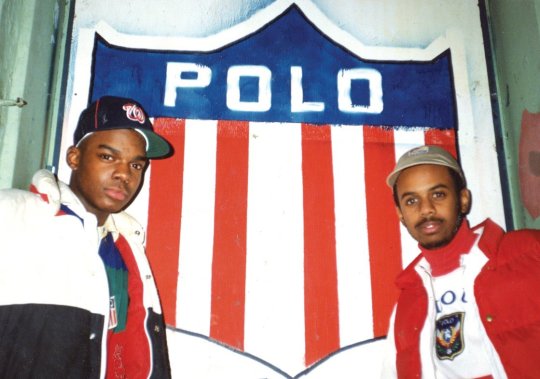
What was New York like in the late 80s and early 90s? What was a normal day like back then?
New York was very violent and filled with a lot of criminals from all communities. At any time you could have lost your life for the pettiest things — people just didn’t see the value in life back in those times.
A normal day for me was doing crime, and by me engaging in criminal activities I was able to sustain who I was and my lavish lifestyle.
I suppose it’s probably pointless talking about the Lo Life Crew without talking about boosting or racking. Wearing all that bright gear, you lot were hardly inconspicuous – so what were your tactics for getting your hands on Polo gear?
Our first tactic was called ‘geeing’ or ‘city slicking’. Using this strategy was more of a calm approach. Even though we wore bright colors, we were still clever in the stores.
Then I coined the term ‘million man rush’ as I helped usher in our newest strategy called ‘steaming’. This is where we just entered the store with a mob of like 50 heads and would just snatch what we wanted and headed to the door. I would say the ‘Million Man Rush’ tactic was the more dangerous. And further that act brought you a heavier jail/prison sentence if you were apprehended.
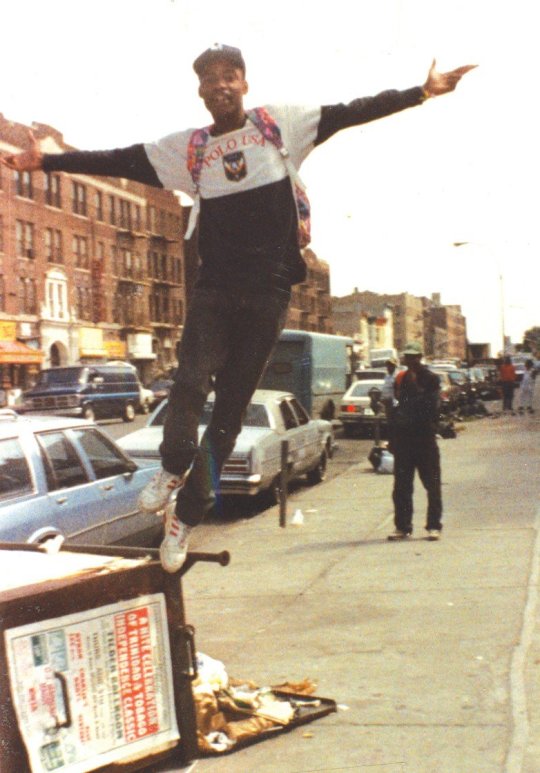
Did you ever get caught?
Yes, I have been caught on many occasions. As a result I was locked up in juvenile detention and I was an inmate on the infamous ‘Riker’s Island’. But in my case I was still fortunate because I never spent time in prison — only in city jails for very short time periods. The longest I spent incarcerated was four months.
The whole thing of nabbing and wearing aspirational clothing wasn’t too different to what casuals were doing in England and the Paninaro were doing in Italy around a similar time. Were you aware of any of those subcultures?
No, I never heard of those, sounds interesting out in England though. Dope!
Why do you think people gravitate to this high-class functional stuff? A lot of people wear hunting jackets or skiing coats, but they'll never go hunting or skiing.
That’s just how the ghetto operates. Although the clothes were made for those occasions and atmospheres we simply turned those wears into hood fashion artefacts. We never played by the rules, we made our own rules.
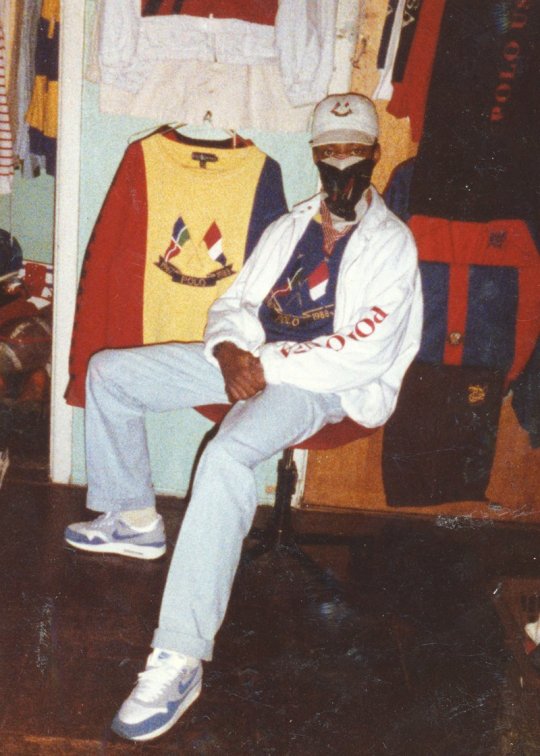
The Polo stuff at that time seemed to be particularly intense. Lots of bright colours and big logos — what were the main items you’d go for?
My favorite polo pieces are the Crest, the Yacht, the Anniversary Cross Flags and the Cookie.
Was there a competitive element to all this? Were you trying to one-up your friends by finding rarer stuff?
Yes, every day each Lo Life’s intension was to out-dress the next. The competition was high amongst individuals in the crew and we also competed against other crews as well. Some of the greatest show downs took place at Empire Skating Rink’.
What else were you lot wearing back then? What else was in the mix?
Besides Polo, I wore Guess, Tommy Hilfiger, DKNY, Nautica, Gucci, Descente, Head, Prince, Sergio Tacchini and Coca-Cola. There was a lot of fresh brands we rocked.
Obviously the clothes were a big part of it, but what else was Lo Life about? What else was going on?
Everything that was a part of hip hop was happening. Remember this was 1988 the golden era of hip hop. But besides the clothes we did a lot of crime, partying and just running the streets. It was all about survival. So either you were a street kid or you played it safe and stayed out of trouble. But for us, we always found trouble, because most of the times we initiated it.
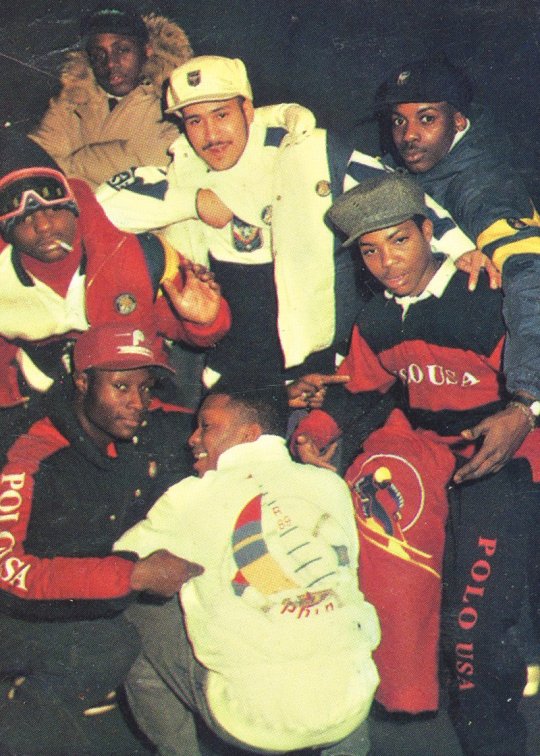
How has New York changed since the late 80s? Do you think you lot could get away with the same stuff if you were growing up now?
New York has definitely changed. The time I’m reflecting on is considered ‘The Old New York’. Nowadays, there are cameras everywhere. The city is filled with surveillance, so yes in the current times getting caught would be a realistic matter. Plus there are a lot more cops on the streets now. In the 1980s you had cops, but you also had crime fighters like ‘The Guardian Angels’ who also tried to prevent a lot of the madness from happening on the New York City streets. It worked sometimes, but for the most part, the criminals prevailed.
But I know for a fact, if the Lo Life’s were committing the same acts in the 1980s in the new millennium a lot of us would be in jail for decades and life on the back of the sentence. Because a lot of Lo-Life’s are three time losers meaning they already have three felony convictions. So a fourth one will keep them incarcerated for life. 2018 is not the time to being doing anything stupid.
What are your thoughts on streetwear today? Now that kids can just sit on a computer and buy whatever they want, is it still ‘street’?
No, it’s not street. I’m not into the new fashion and styles — I like gear that stands the test of time. Nowadays, a lot of the brands don’t have staying power. Polo has been here since 1967 and it’s still so relevant — it’s timeless and will never go out of style.
This staying power is what all of the other brands fight and struggle for. Will they last for the next 10 or 20 years? I see clothing brands come and go so often.
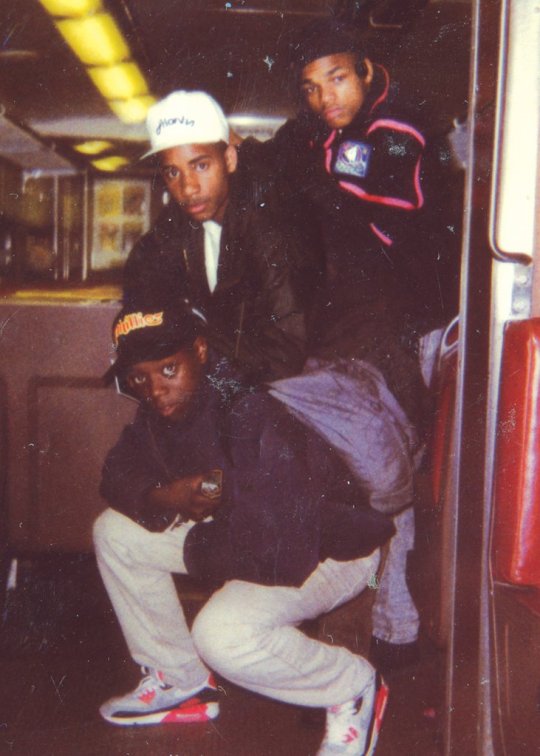
Have you ever heard what Ralph thinks of all this?
Yes, Ralph had no choice but to acknowledge our movement. I never cared about meeting Ralph or none of that. He was a non-factor in my life as far as my aspirations are concerned. I’m a realist.
The Lo-Lifes go hand in hand with Ralph. In the same way he created a brand, so did the Lo-Lifes. We have come a long way and we are still on the front lines doing it big.
What do you get up to these days? What’s an average day like for you now?
Nowadays, I’m all about business, traveling, family, being a great husband and father and truly helping other people realize and pursue their dreams. I view myself as the Creative Director and Visionary in all that I engage in. I have a lot of great things coming down the pipeline.

Sounds good. Any wise words you’d like to add?
Yes, check out my book Lo Life: An American Classic. It feels great to be a published author, and this is just my first book, I have plenty of stories to tell.
Thank You! 2L’s Up and SaLLute!
Lo Life: An American Classic is available now. Get it here. Interview originally published in 2018.
1 note
·
View note